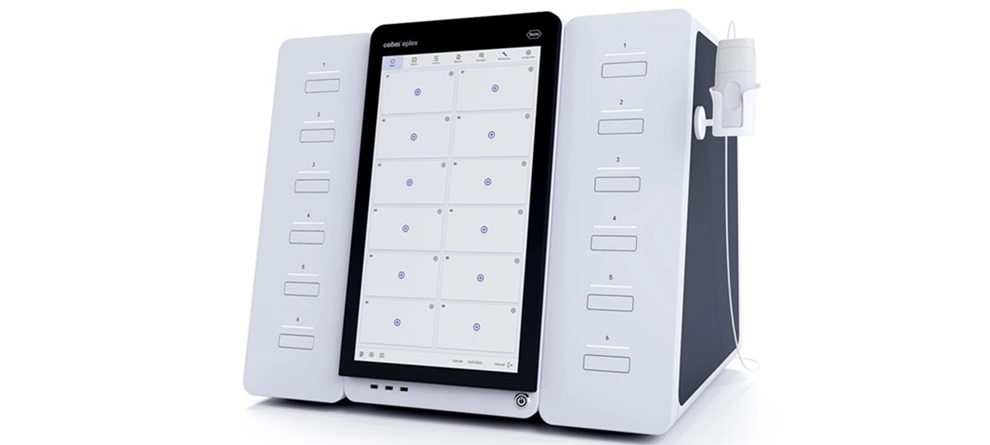Rapid Diagnostic Test for Drug Resistant Tuberculosis Reviewed
By LabMedica International staff writers
Posted on 18 Nov 2014
People suffering from a drug-resistant strain of Mycobacterium tuberculosis, the causative agent of tuberculosis (TB), are more likely to die from the disease, and require treatment with what are described as “second-line” drugs.Posted on 18 Nov 2014
A rapid and accurate test that could identify people with resistant TB, including a type of TB that is resistant to almost all anti-TB drugs, called extensively drug-resistant tuberculosis (XDR-TB), is likely to improve patient care and reduce the spread of drug-resistant TB.

Image: The GenoType MTBDRsl rapid test to diagnose patients with multidrug resistant tuberculosis (MDR-TB) also provides information on further antibiotic resistances (Photo courtesy of Hain Lifescience).
Scientists at the Liverpool School of Tropical Medicine (UK) have conducted an independent review to examine the diagnostic accuracy of a commercial assay for the detection of resistance to second-line anti-tuberculosis drugs. They reviewed the results from 21 studies, 14 of which reported the accuracy of the specific assay with direct testing, five of which looked at indirect testing, and two of which looked at both.
GenoType MTBDRsl (Hain Lifescience GmbH; Nehren, Germany) is the only rapid test that detects resistance to second-line fluoroquinolone (FQ) drugs and second-line injectable drugs (SLID) as well as detecting XDR-TB. MTBDRsl can be performed on TB bacteria grown from sputum, which is called indirect testing and can take a long time, or can be performed immediately on sputum, which is called direct testing.
By indirect testing, the test detected 83% of people with FQ resistance and rarely gave a positive result for people without resistance. In a population of 1,000 people, where 170 have FQ resistance, MTBDRsl correctly identified 141 people with FQ resistance and missed 29 people. Of the 830 people who do not have FQ resistance, the test correctly classified 811 people as not having FQ resistance and misclassified 19 people as having resistance. By direct testing, the test detected 85% of people with FQ resistance and rarely gave a positive result for people without resistance.
By indirect testing, the test detected 77% of people with SLID resistance and seldom gave a positive result for people without resistance. In a population of 1,000 people, where 230 have SLID resistance, MTBDRsl correctly identified 177 people with SLID resistance and missed 53 people. Of the 770 people who do not have SLID resistance, the test correctly classified 766 people as not having SLID resistance and misclassified four people as having resistance. By direct testing, the test detected 94% of people with SLID resistance and hardly ever gave a positive result for people without resistance.
By indirect testing, the test detected 71% of people with XDR-TB and rarely gave a positive result for people without XDR-TB. In a population of 1,000 people, where 80 have XDR-TB, MTBDRsl correctly identified 57 people with XDR-TB and missed 23 people. In this same population of 1,000 people, where 920 do not have XDR-TB, the test correctly classified 909 people as not having XDR-TB and misclassified 11 people as having XDR-TB.
Grant Theron, PhD, the lead author of the review, said, “Our review shows that in adults with TB, a positive result for second-line drugs, either fluoroquinolone or injectable, or XDR-TB can be treated with confidence. However, given that a number of people tested negative while having a resistant strain, clinicians may still want to carry out conventional testing in some cases.” The study was published on October 30, 2014, in the Cochrane Review.
Related Links:
Liverpool School of Tropical Medicine
Hain Lifescience GmbH













